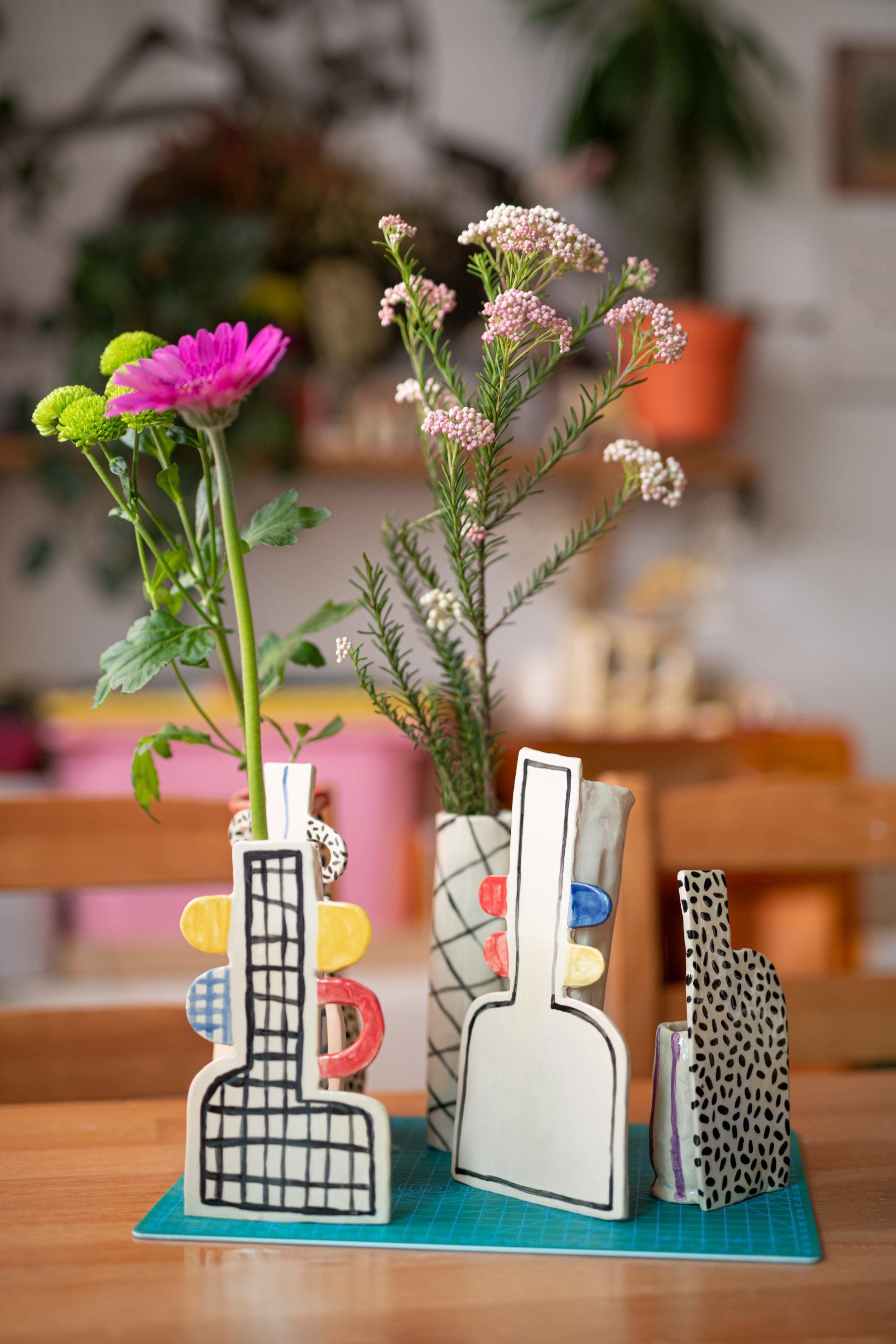Eszter Glaser found ceramics instinctively during the time of the quarantine in the spring. The creator mainly working in the field of animation makes unique objects of various sizes and shapes, catching the eyes of unsuspecting bystanders with their imperfection and cheerful patterns. If you thought the genre of ikebana can be nothing but boring, allow us to prove you wrong. Meet KOKOMO ceramics!
We visited Eszter Glaser on a sunny afternoon: the lovely, sunny terrace with an old, green armchair and forest of plants all looked very inviting. There are quite many of them both inside and out. In one of the flower pots, we see a Terminator action figure reaching its hand towards us in a small cage. “It used to be in the aquarium” – Eszter informs us laughing, and points to a glass box a little further away. They brought the armchair home from a clean-up, she adds.

We discover a soap holder shaped like an UFO head, and there are dinosaurs of various sizes popping up here and there in the apartment: Eszter bought the quite large one next to the computer in a charity shop for a few thousand Forints, a good friend of hers brought the newer Godzilla figure from Japan, while the inflatable version came from Třeboň, the Czech Republic from an animation festival.

In addition to the books, other knick-knacks and house plants, we see many dried flowers, too: while some usually “forget” their former nice-looking bouquets on the top of the cabinet, Eszter gives them slightly more attention. Partly this hobby of hers made her start KOKOMO ceramics in the first place, too: Eszter reinvented the genre of Japanese ikebana according to her own ideas, resulting in odd-looking ceramics accessories.
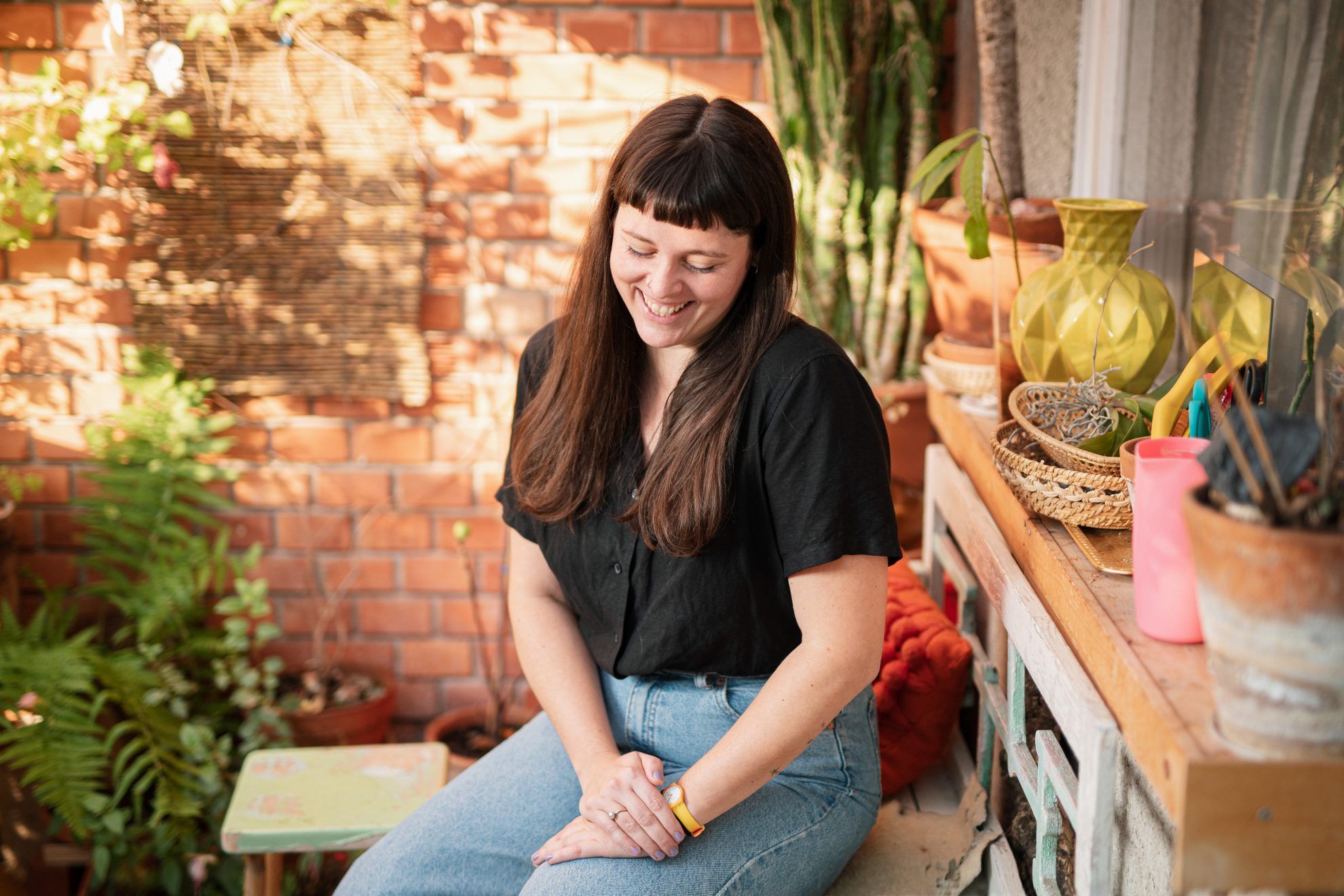
“I couldn’t and maybe didn’t want to define my objects, I didn’t want to say what they should be used for. In my case, looking for the form was absolutely instinctive, but I didn’t think much about the actual function” – Eszter says when we ask her about the birth of KOKOMO objects. She also tells us that when her friends first held the objects in their hands, they gave many useful tips about how to use the strange elements: there were some who found the perfect place for the new object in their toothbrush mugs. Eszter says she is happy when someone uses her objects creatively, as these forms are flexible enough to be used for purposes other than simply holding flowers. She, for example, keeps the wild rose received for her engagement in a KOKOMO ceramics.

This new kind of crafts seems to be reaching more and more creators of the Hungarian design scene: designers who have worked on completely different fields also dived into getting to know the processes of creating with their hands. More and more designers are starting to discover the joys of manual creation, and this phenomenon was most likely also triggered by the quarantine brought on by the coronavirus.
The majority of these designers of course did not quit their original profession, this is exactly why the newly chosen “love projects” could remain an activity that mainly serves as a source of joy for the creator. This is how Petra Hoffmann and Anna Bárdy’s brand Studio Clayground started (with whom we also made an interview at the time), or the What the Rug brand, owned and operated by Anna Katalin Lovrity otherwise known as an animation movie director (we have already presented her works in a previous article). Something very similar happened in the case of KOKOMO ceramics, too: even though Eszter has never studied ceramic design, her first encounter with clay marked her path paved with imperfectly shaped, often odd, but always loveable ceramic objects. In this world, therapeutic, flow-generating work is just as important as branding.
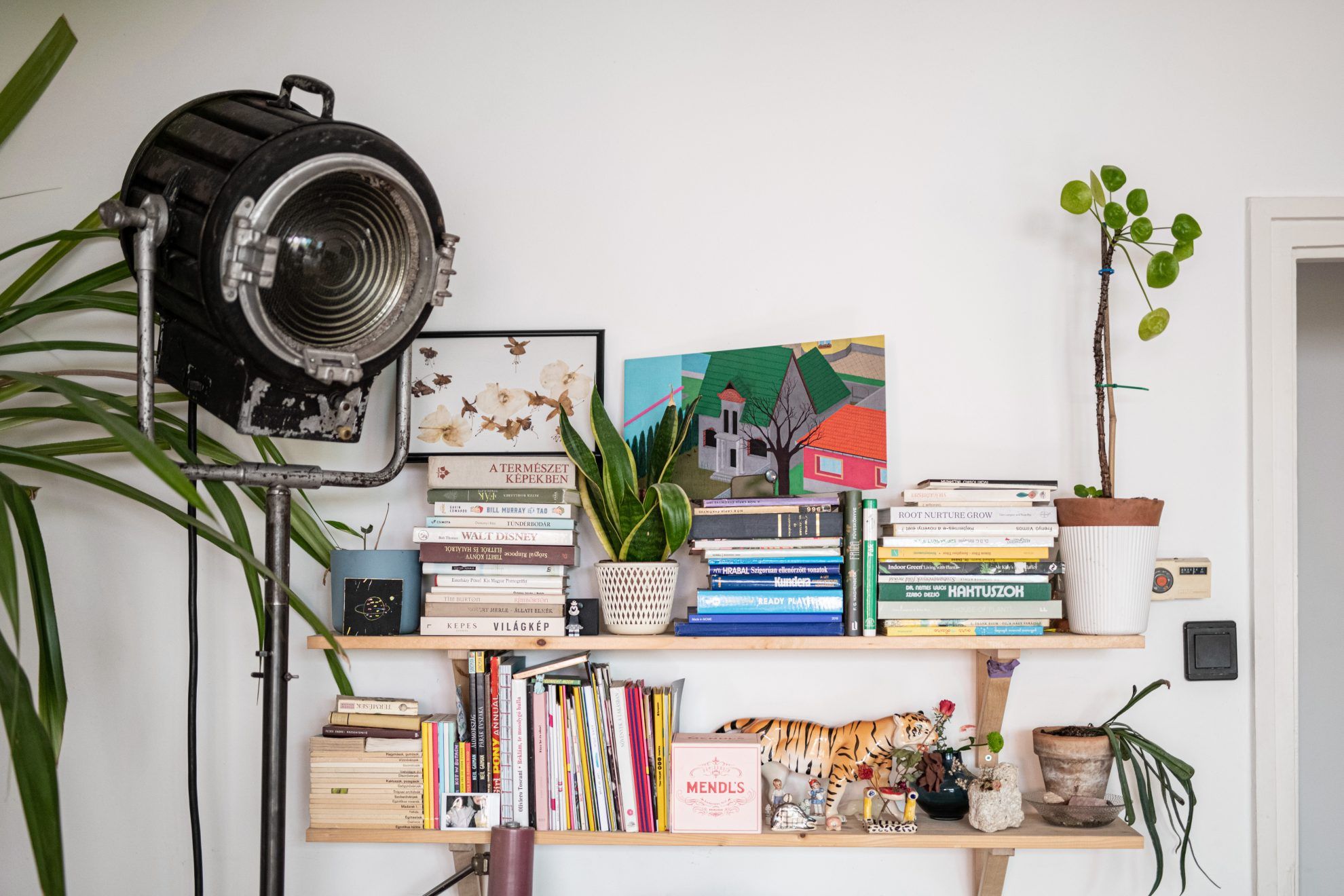
Each and every one of the sometimes smaller, other times bigger ceramic objects whose functions are perhaps hard to define at first glance are made here, in Eszter’s flat, but burning and glazing take place in a small workshop in District 8 of Budapest. When we were there, a fresh batch of KOKOMO was resting on the dining table: in addition to the previous dominant marks (black, yellow, red and blue colors, and notch-like patterns), the new collection also features square grids, this time in the form of extraordinary vases. “Eszter Kanyári, who makes sugar flowers contacted me a little while ago. She cleverly called these objects contour vases, and I have been calling them that ever since”– she tells us, while she puts flowers into the vases (Eszter and the founder of the SugarCraft brand, whom we have already written about earlier are also planning a photo series together).

One of the renown representatives of postmodern object design, the Italian Memphis Group and Bauhaus, the pioneer of modernism also influences Eszter’s works, but while she mainly borrowed the universal colors and simple, geometric forms from the latter, the former is important to her due to the playfulness and boldness of the designers. She does not settle for medium good or boring either: as she says, she needs to start something brand new in every 3-4 years. She got a diploma as a fashion and style designer, she worked as a photo editor at a women’s magazine for years, and then her cousin, Katalin Glaser, who is a director, invited her to be one of the assistant directors of the „Városi legendák” (Urban Legends) animation series (together with Zsuzsanna Bányai). Later on she also studied animation at MOME, where she participated in the making of various animation productions as project manager and production manager, and currently in addition to KOKOMO, she works on Márton Szirmai’s feature film and Bálint Gelley’s animation series titled „Átjáró Másvárosba” (A Door to Othertown).
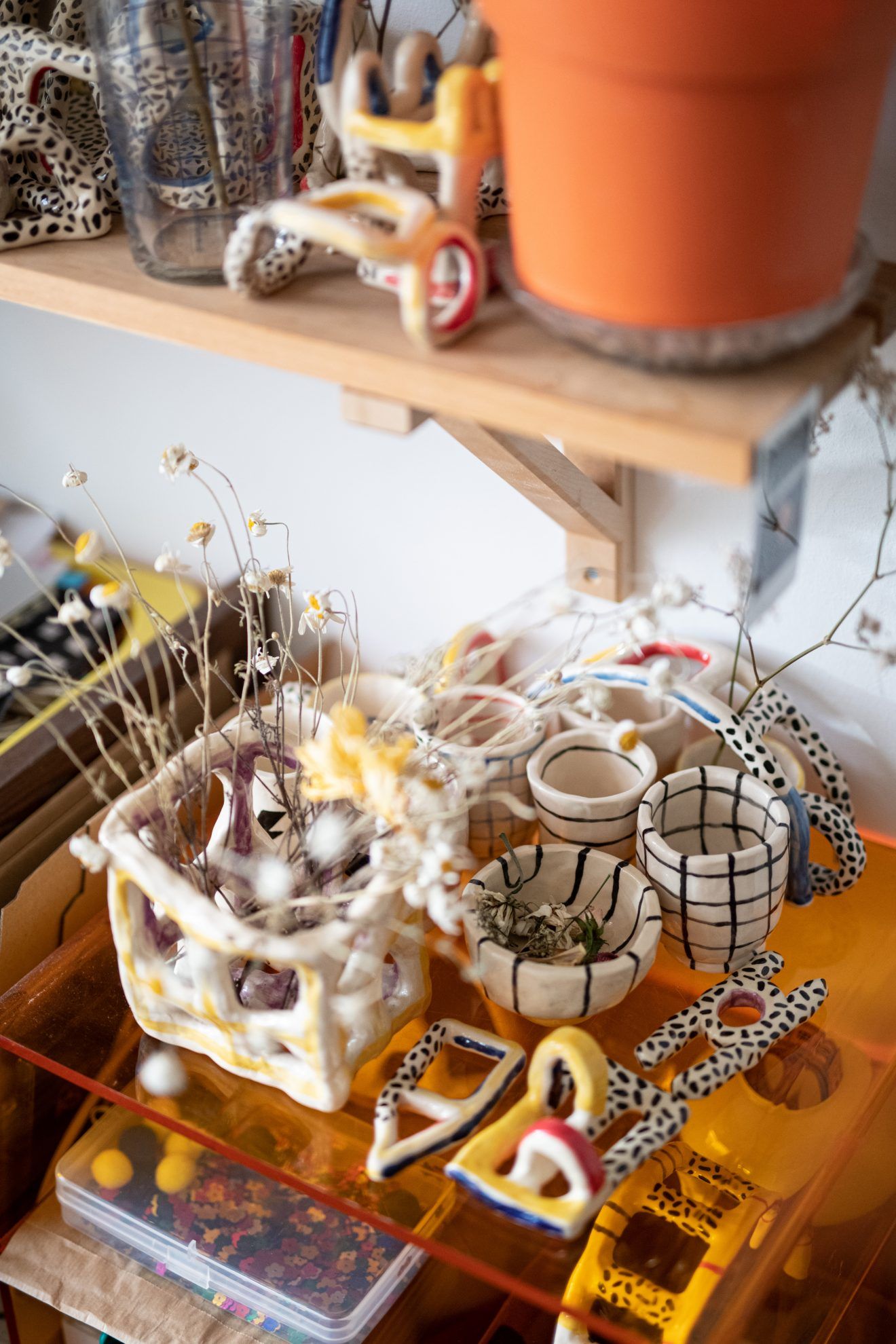
And why KOKOMO? The answer couldn’t be simpler: this is Eszter’s favorite track from the Beach Boys, which is, let’s admit it, a fairly good name for a brand that’s extraordinary, slightly odd, yet very cheerful, life-affirming and l’art pour l’art at the same time – something in relation to which we don’t have to look for a meaning, because it makes us smile nevertheless.
Photos: Milán Rácmolnár

Atari is back
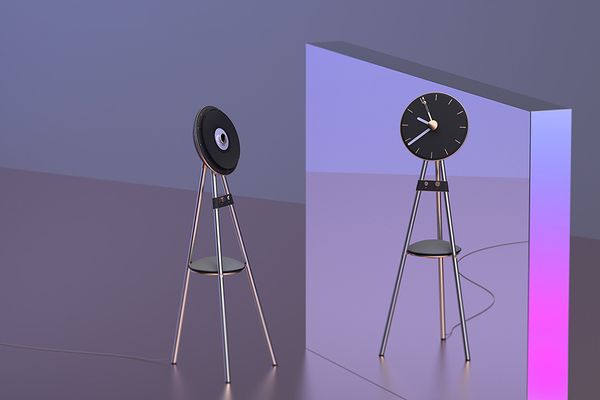
Clock, turntable or both?










